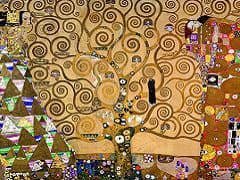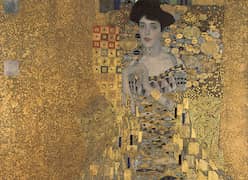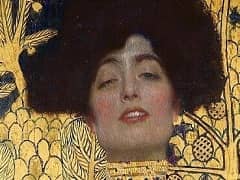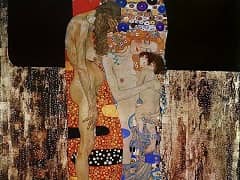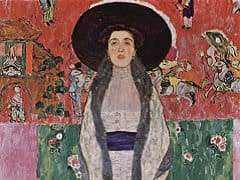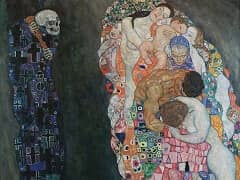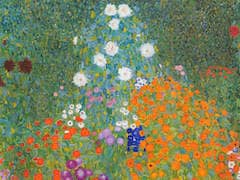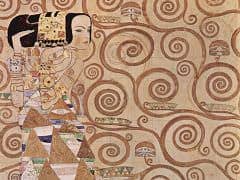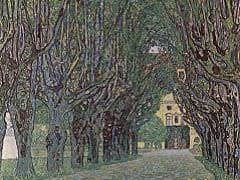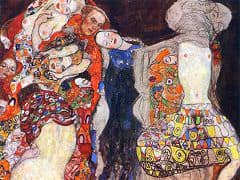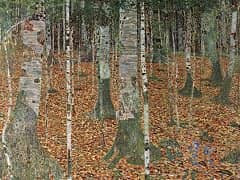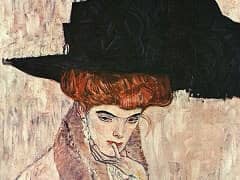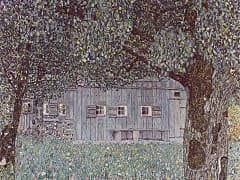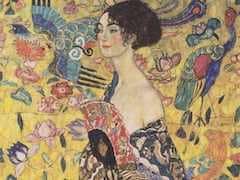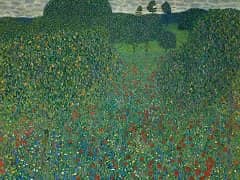Schloss Kammer on Attersee II, 1909 by Gustav Klimt

Many of Klimt's images from the Salzkammergut district, where he stayed every year with Emilie Floge, 'were of the spectacular alpine lake, the Attersee, which he first painted in 1901. These
scenes, like the Schloss Kammer, were usually studied from the water, Klimt rowing out onto the lake to paint during lazy mornings or afternoons, with Emilie at his side. Klimt's landscapes
were primarily concerned with capturing a world unaffected by the rapid changes, both industrial and political, associated with his city life.
Many Klimt's landscapes featured only nature, a spiritualized world devoid of mankind. Although this work includes the castle, it is as a symbol of a bygone age, and, like buildings in other
works, is gradually being absorbed into the scenery, as though consumed by the landscape. Nature is in command here as the highly decorative yellow-blue-green Impressionist mass rapaciously
grows across the surface, engulfing all in its wake. The sensation is augmented by the flat perspective which reduces the castle's dimensions and helps merge it in to the color mass. The
bright green and yellow banding at the bottom heralds Klimt's important and influential discovery of Henri Matisse, whose revolutionary colorwork was
first shown at the Kunstschau 1909 exhibition.


